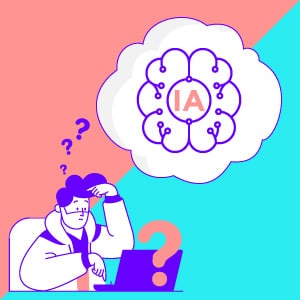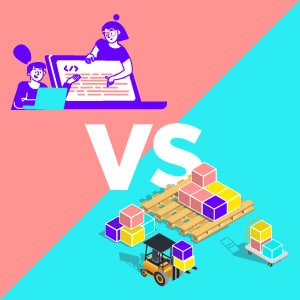
Esto es lo que muchos asumimos de IA y nadie se molestó en aclarar, ciertamente es memorable para una compañía, el día que decide llevar a cabo su primera iniciativa de Inteligencia Artificial (IA).
Sin embargo, la gran mayoría de estas compañías pasan de inmediato a dar el único paso que parece natural: buscar, reclutar y contratar al equipo de expertos que cumplirá todas aquellas promesas de transformación basadas en IA que llevan meses, o a veces, años de discusión.
A partir de este momento, el área de talento humano es encomendada con una misión que parece insuperable, debido al gran número de incertidumbres que representa formar un equipo élite de datos, también conocida como Analítica de Datos, o mejor Ciencias de Datos, o quizás Inteligencia Artificial.
O seamos sinceros, tampoco estamos seguros de cómo llamarlo. Las preguntas que surgen, parten desde las más sencillas hasta las más trascendentales:
- ¿Cuál es el perfil de los aspirantes? ¿Son ingenieros, matemáticos, físicos, economistas, politólogos, antropólogos, diseñadores o administradores?
- ¿Cuál es el nombre de la posición ofertada? ¿Es analista, científico o ingeniero, administrador o arquitecto de datos? Incluso hay por lo menos 5 nombres adicionales que podría nombrar.
- ¿Cuánta experiencia profesional se debe tener en cuenta para una profesión que no se sabe a ciencia cierta hace cuánto existe o a partir de cuándo existirá?
- ¿Cuál es el mejor lugar para buscar los candidatos más idóneos para el perfil por definir de datos?
- ¿Cuáles son los criterios quasi-para-psico-técnicos a evaluar para seleccionar el mejor candidato que llevará a cabo la iniciativa de transformación digital de mi negocio?

Expertos de Negocio vs Expertos en IA

Desarrollar IA vs Productivizar IA
Una de las mayores ironías que he tenido oportunidad de ser testigo en múltiples proyectos de IA, es la estrecha dependencia que se crea entre el científico y el modelo de datos.
Esto se debe a que todo modelo que soporta una iniciativa de corto o largo plazo involucra una etapa inicial de diseño, seguido por el desarrollo, y por último el soporte. Esta última, es la etapa más incomprendida porque el 99.9% de los modelos se crean para ejecutarse más de una vez, de hecho cientos a miles de veces más.
Sin embargo, la ironía radica en la necesidad del científico de datos para preparar, monitorear, afinar y finalizar la ejecución. Con el atenuante que las eficiencias en tiempos de entrega y precisión, medidas en milisegundos y varios nueves después del punto, respectivamente; se ven opacadas por el par de horas requeridas por el científico para poner a andar el modelo de IA.
Esto es equivalente, a diseñar un auto sin sistema de encendido, donde cada trayecto requiere el empuje coordinado del conductor y los pasajeros para poner en marcha el motor.
Esta situación se origina en que los roles y aptitudes para desarrollar un modelo de IA difieren de aquellos perfiles y conocimientos para hacer del modelo una aplicación productiva con uso recurrente. De aquí se derivan nuevos conceptos tales como AutoML o MLOps, los cuales serán tema de un post exclusivo.
Aprovecha al máximo tus datos, ahorra tiempo y dinero en tu cadena de suministro usando Inteligencia Artificial con Datup.

Un modelo de IA es un esfuerzo de única vez
“Hacer un modelo de IA es un esfuerzo de única vez”. Esta no es solo una creencia común, sino además falsa.
En un mundo ideal, los equipos de IA han conseguido empatizar a profundidad con la necesidad estratégica del negocio, lo cual les permite desarrollar un modelo que impulsa los indicadores de desempeño hacia las zonas verdes de los tableros de control.
Paso seguido, el modelo es puesto en producción para que en cada nuevo corte de análisis, por sí solo resuelva y entregue los resultados en verde, como sucede desde la primera vez.
No obstante, en este caso el calificativo ideal es sinónimo de irreal. Las condiciones en que un modelo se desempeña son altamente variables como para suponer que el sistema de IA no requerirá una afinación como actividad continua.
Dejando de lado la razón más evidente que es la recolección de nuevos datos con cada ejecución; la adaptación requerida por el modelo se debe principalmente a las reglas de juego siempre cambiantes del negocio.
Aquí nuevamente, los principales responsables de advertir tales ajustes al modelo de IA son los expertos de negocio, y así el equipo de IA es el encargado de transmitir las lecturas del negocio al modelo para que los resultados sean coherentes con el nuevo contexto.
A partir de aquí, es fácil prever que esta dinámica, en lugar de trazar una línea recta del punto A al punto B, describe una trayectoria circular, un ciclo.
Si tienes alguna inquietud o quieres conocer más a fondo nuestras soluciones en Inteligencia Artificial no dudes en contactarnos!
